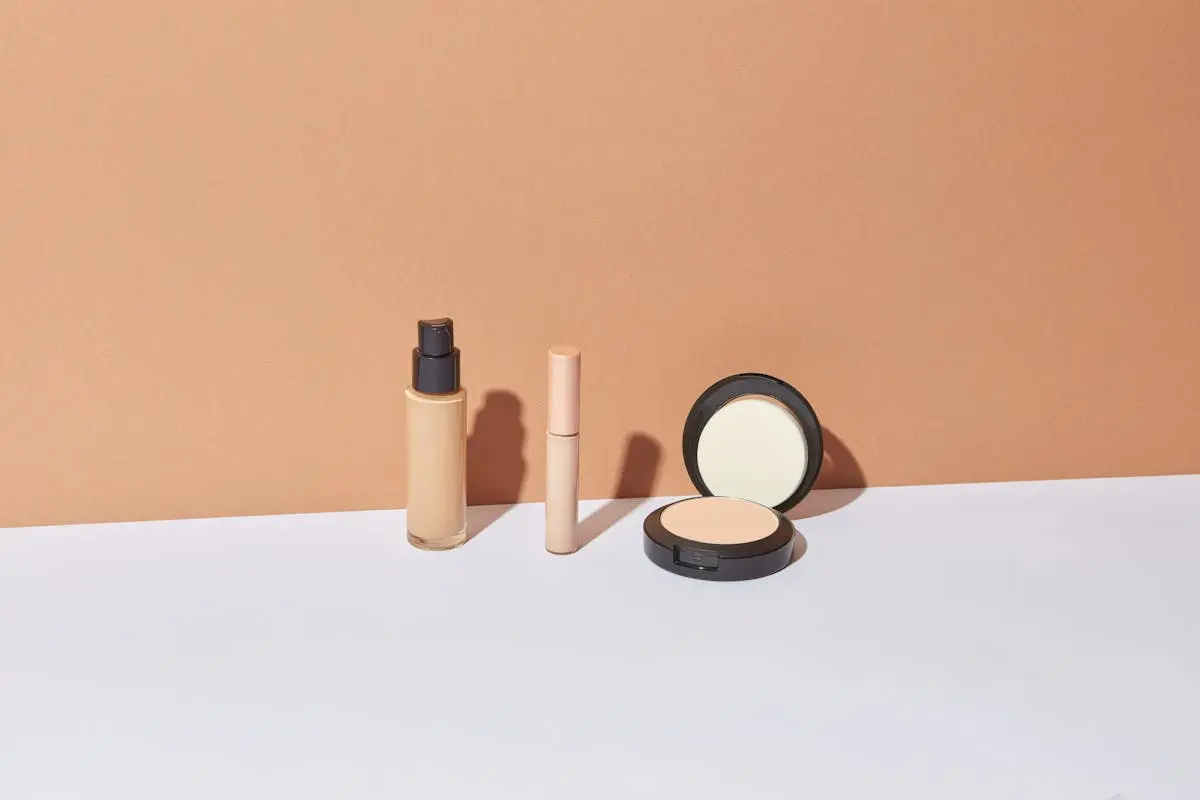Understanding your skin type
To understand your skin type, it is essential to know that there are mainly four types: normal, oily, dry, and combination skin. Here’s a quick rundown on how to identify each:
- Normal skin: Appears smooth and has a balanced moisture level.
- Oily skin: Often looks shiny and is prone to breakouts.
- Dry skin: Feels tight, sometimes flaky, and lacks moisture.
- Combination skin: Shows characteristics of both oily and dry skin, with an oily T-zone and drier cheeks. Remember, choosing the right foundation starts with determining your skin type accurately.
Identifying your skin tone
To identify your skin tone, stand in natural light and observe the undertones of your skin. Undertones are the subtle hints of color beneath the surface of your skin. Warm undertones appear yellow, peachy, or golden, while cool undertones have a pink, red, or blue hue. Neutral undertones show a balance of warm and cool tones. You can also perform the vein test: check your wrist veins. If they appear green, you likely have warm undertones; if they look blue, you lean towards cool undertones. Finding the right foundation shade that matches your undertones is crucial for a seamless, natural look.
Importance of choosing the right foundation
Choosing the right foundation is crucial for achieving a seamless and natural look. The correct foundation can even out your skin tone, cover imperfections, and create a smooth base for the rest of your makeup. It can help you feel more confident by enhancing your natural beauty. The wrong foundation, on the other hand, can look unnatural, cakey, or mismatched, which can ruin your overall makeup look. By selecting the appropriate foundation for your skin type and tone, you can achieve a flawless finish that enhances your features and boosts your confidence.
Different types of foundations
Liquid foundation, powder foundation, cream foundation, mineral foundation, and stick foundation are the main types of foundations available in the market. Each type offers unique benefits based on your skin type and coverage preferences. Liquid foundation provides a natural finish and is versatile for different skin types. Powder foundation is ideal for oily skin as it helps control shine. Cream foundation is great for dry skin as it provides moisture and coverage. Mineral foundation is gentle on sensitive skin and offers light to medium coverage. Stick foundation is convenient for on-the-go touch-ups and provides buildable coverage. Consider your skin type and coverage needs when choosing the perfect foundation for a flawless makeup look.
Matching foundation to your skin type
First things first, when you’re choosing a foundation for your skin, it’s crucial to match it correctly to your skin type. Here’s a quick guide to help you out:
- For oily skin: Look for oil-free or mattifying foundations to control shine throughout the day.
- For dry skin: Opt for hydrating foundations with moisturizing properties to keep your skin looking fresh and dewy.
- For combination skin: Find a foundation that balances both oil control and hydration for an even finish.
- For sensitive skin: Choose foundations that are hypoallergenic and fragrance-free to avoid any irritation.
Remember, the key is to enhance your natural beauty by choosing a foundation that complements your unique skin type and tone.
Matching foundation to your skin tone
Your foundation should match your skin tone to blend seamlessly. To find the right shade, consider factors like your undertone and whether your skin is warm, cool, or neutral. Always test foundation on your jawline to ensure a perfect match. Avoid testing on your hand since it differs in color from your face.
Testing foundations on your skin
When testing foundations on your skin, remember to first cleanse your face to remove any makeup or oils. Then, apply a small amount of the foundation on your jawline or cheek to check if it matches both your skin tone and undertone. Remember, the perfect foundation should blend seamlessly into your skin without leaving any noticeable lines. Take note of how it looks in natural light as well, as artificial lighting can sometimes alter the color. Remember, it’s essential to consider your skin type when choosing a foundation – whether you have oily, dry, or combination skin will impact how the foundation sits on your face throughout the day.
Considering coverage and finish
Coverage and finish are crucial factors when choosing a foundation that suits your skin type and tone. Coverage refers to how much the foundation can hide imperfections like blemishes and uneven skin tone. Finish indicates the final texture or sheen that the foundation provides after application. Ensure you select a foundation that offers the right coverage level for your needs and gives you the desired finish for your skin.
Factors to consider before purchasing
Before purchasing a foundation, it’s important to consider a few factors. Your skin type will determine the formula that works best for you. Dry skin may benefit from a hydrating foundation, while oily skin could prefer a matte finish. Your skin tone is crucial too; ensure the shade matches your skin to avoid a mismatch. Lastly, think about the coverage you desire, whether light, medium, or full. Adjusting these factors will help you find the perfect foundation for your needs.
Conclusion and final tips
When choosing a foundation, it’s essential to consider your skin type and tone to ensure a seamless match. After determining your undertone and skin type, experiment with different foundations to find the perfect one for you. Remember, it’s okay to mix shades to get the right match. Set your foundation with a setting powder to increase its staying power. Don’t forget to blend well and check the foundation in natural light before making a final decision. Lastly, always prioritize your skin’s health over following trends.

